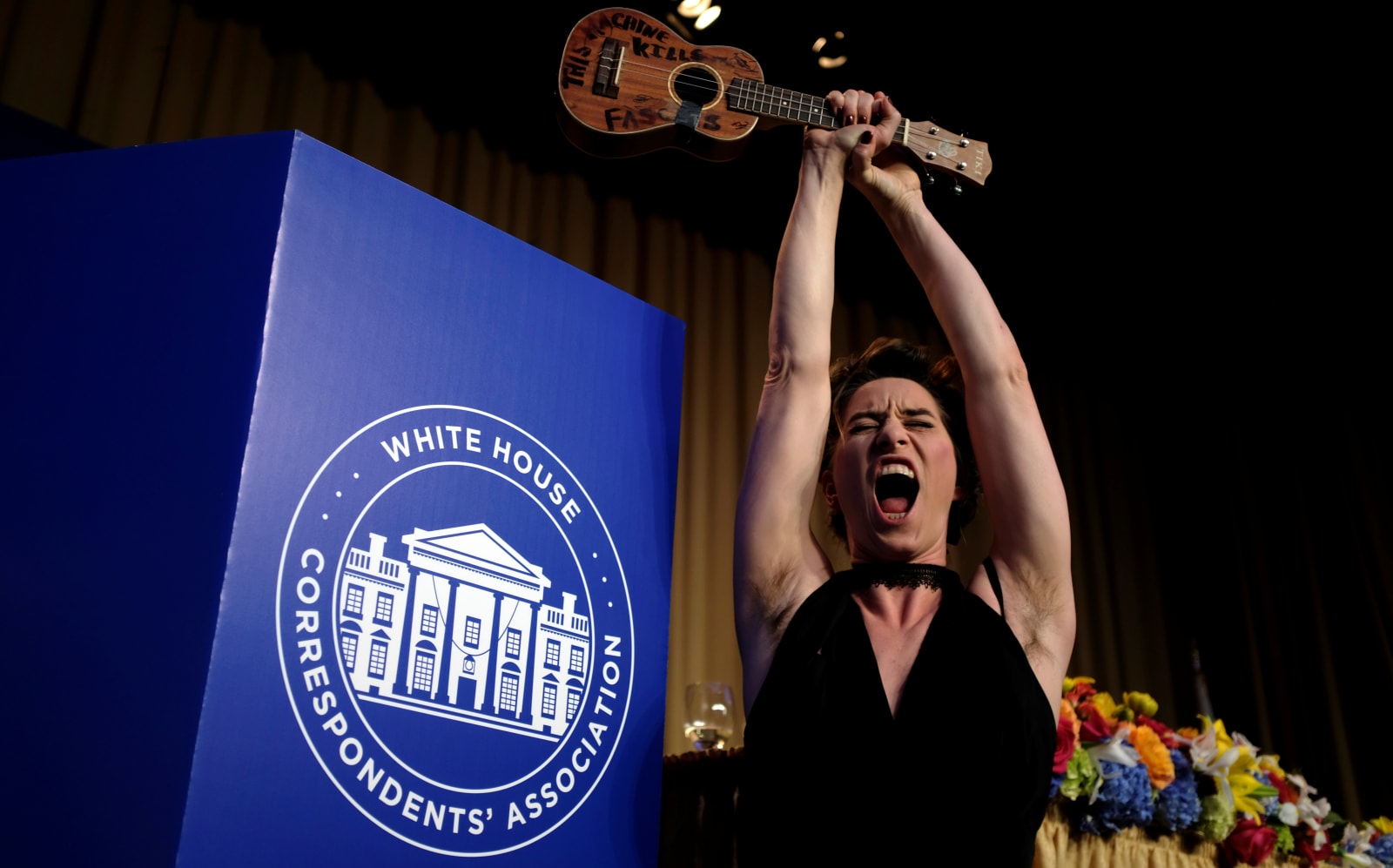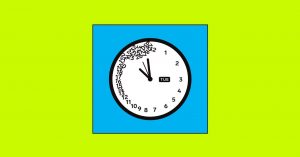It’s not as if Palmer invented crowdfunding or single-handedly spun Patreon into a billion-dollar business, but she helped shape the digital landscape that made it possible for this model to thrive. Patreon was founded in 2013, and by then, Palmer had already spent years evangelizing the benefits of crowdfunding and direct, digitally driven communication between artists and fans. She’s promoting the same message today.
“Every time I make an artistic decision that the Patreon allows me to make, I feel this vindicated relief that I don’t have to do with the old way,” Palmer said in an interview.
A Roadrunner employee told her, “I’m a guy, Amanda. I understand what people like.”
Palmer gleefully left her label, Roadrunner Records, in 2010. She’d been signed to Roadrunner for seven years, and it oversaw the production, distribution and touring details for three of her albums: The Dresden Dolls, Yes, Virginia, and Who Killed Amanda Palmer. But by 2008, the relationship had become toxic. Palmer had lost creative control over her music and executives were pushing her to be more mainstream — that is, thinner and more feminine. The label attempted to edit one of her videos in 2008 because executives said, essentially, that she looked fat. In that meeting, Palmer says a Roadrunner employee told her, “I’m a guy, Amanda. I understand what people like.”
She also poured $80,000 of her own money into Who Killed Amanda Palmer, in order to release an album she believed in.
“I would often get into these tiffs with my major label, where I would just be like, ‘Fuck it, I will take the hit, I’ll pay for it,'” she said. “And they’d be like, ‘OK, suit yourself. You pay that six grand, but we’re still going to take 99 percent of your income at the end of the day.’ And I would take the hit for the art department so many times that it just felt like such a stupid, abusive relationship.”
In March 2009, Palmer released a song dedicated to Roadrunner called “Please Drop Me,” and on April 6th, 2010, the label did.
Two years later, Palmer became the first musician to raise more than $1 million on Kickstarter. Her story went viral, covered by major news outlets with an air of bewilderment. Online crowdfunding was in its infancy, and Kickstarter was still an idea you had to carefully explain to older relatives at family gatherings, lest they start yelling about the dangers of communism and strangers on the internet.
Kickstarter and Patreon both tap into a specific, long-standing tension between art and commerce, but with a dash of social media anxiety thrown into the mix. It’s the idea of selling out, but publicly, loudly and with a barrage of posts asking friends, family and followers to donate, donate, donate. It’s the thought that art is pure, money is dirty, and mixing the two only cheapens both.
It’s idealistic, and also unrealistic for anyone who wants to create art full-time.
“You guys have no idea how expensive it is to make a music video.”
“No one really wants to have these conversations with the world or with the press, or even with their own audiences,” Palmer said. “And I’m like, fuck it, I’ll have that conversation. You guys have no idea how expensive it is to make a music video, or hire 10 people to come on tour with you, and have a bus driver and hotel rooms for everyone to stay in. Art costs so much money, and it all just appears in front of everyone on stage or in the form of a YouTube clip like magic. And I’m all about reminding people that there is an immense amount of work and energy that goes into doing this stuff.”
Palmer’s Kickstarter sought $100,000, but ended up earning just under $1.2 million. As the crowdfunding campaign succeeded, it also came under scrutiny. Critics took issue with one clause in particular, where Palmer invited local musicians to join her on-stage during the tour for Theatre is Evil, the album funded by Kickstarter. She didn’t offer money to these performers, instead promising to feed them beer and give them hugs.
Online backlash was swift, with folks accusing Palmer of taking advantage of her fans, while ferreting away their cash for herself. In a piece titled, “Amanda Palmer’s Accidental Experiment with Real Communism,” The New Yorker dubbed her the internet’s villain of the month.
Which brings us to the second part of the art-tension equation: social media. Palmer has been blogging, emailing and sharing her artistic journey with the internet since the beginning, and she continues to post about her life daily on Instagram and Twitter. She shares moments that million-follower rock stars often hide: intimate stories of her past and present; relationship trials and triumphs with her husband, author Neil Gaiman; the harsh realities of touring and performing; photos of her young son; ruminations on political injustices; real-time updates on the health and history of a dear friend as he lay on his deathbed. No subject is taboo.
However, Palmer also listens. Over the past 15 years, she’s built a community of loyal fans by responding to their messages, empathizing with their stories and talking about all of it in an authentic way on her own channels. When Roadrunner wanted to edit out images of her stomach in her 2008 music video, Palmer shared the story with her fans in an email blast and ended up rallying an online movement of belly appreciation (dubbed The Rebellyon). More than 300 people shared images of their tummies on a single forum, and outlets including The Guardian covered the tiny, digital phenomenon.
This manic communication style can also be weaponized, especially when Palmer focuses her energy (and her fans) on one subject, outlet or person. Palmer recently published a 16-part Twitter thread bemoaning the lack of mainstream coverage for her latest album and accusing The Guardian specifically of blacklisting it. She focused on one writer who had blocked her during the 2012 hugs-and-beer debacle (we’ll get back to that in a minute). This person, Guardian deputy music editor Lauren Snapes, debunked Palmer’s editorial accusations on Twitter that same day and went on to share a strange story.
In April, Palmer apparently singled out Snapes on a podcast, saying, “I can’t stop thinking about how I want to win her over, and change her mind, and force her to love me, and connect with me and see the light.” A few months back, Snapes received an email from someone claiming to be a journalist, asking for comment on her relationship with Palmer. Snapes looked them up and discovered they were actually employed by Palmer, as the singer’s own traveling historian. Snapes received a random, personal invitation to an event Palmer was playing. Palmer emailed Snapes directly to invite her to the White House Correspondents’ Dinner.
Snapes called the experience “disturbing,” saying, “I have been harassed in this way before by male musicians; I don’t expect it of a woman.”
Both tweet threads are littered with people calling Palmer entitled, narcissistic and blind to her own behavior. Palmer apologized the following day in a string of six tweets, including one re-sharing the link to her own reporter’s story about her tour. Her fans appear at the end of the thread, and they still have her back.
Throughout this entire mess, Palmer’s Patreon subscriber numbers continued to climb.
It’s easy to mock the person posting multiple times a day, sharing their innermost fears and engaging with online communities in such a public manner, but for Palmer, it’s been an effective communication strategy. This personal connection with her fans has helped her break crowdfunding records multiple times over, and it’s granted her the ability to bounce back from missteps in art and social media alike.
“I don’t think of my million Twitter followers as strangers.”
“I don’t think of my 15,000 Patrons as strangers, and I don’t think of my million Twitter followers as strangers,” Palmer said. “I recognize people on the daily; these are people who I have a two-way conversation with. I think the way I have used social media for the last 20 years, since I started the blog, has been all about not just megaphoning my opinions, ideas and product of the week at people, but conversing. It’s a big fucking campfire. I spend a lot of time on social media also reading what people have to say, and talking with them and listening to them.”
This is why it wasn’t weird, in her mind, to ask fans for a couch to crash on while on tour, or invite them to play their own music before her show, with only beer and hugs as compensation. Even though Palmer is the star, and the one collecting the money, she doesn’t separate herself from her community. More importantly, neither do her fans. She’s simply a part of the naked, crying, piano-slamming, ukulele-strumming ecosystem, providing as much as she’s taking.
Two messages from Palmer’s Patrons, for the world:
“Unlike many other artists, who might appear to listeners as anonymous music-production machines or carefully-groomed PR presences, Amanda feels like a real human being (which, of course, she is).” – Jack Abramowitz, 53
“Amanda is one of my role models. …Her openness online and ideal of radical honesty has inspired me to be radically honest. …Her art feels organic and real. Plus, it is almost all in real-time. To say the least, it is a unique experience to be her Patron.” – Caroline Conlon, 19
And two messages from Patrons, for Palmer:
“Thank you. Thank you for your music, your book (I’ve listened to the audiobook version several times), your art, for sharing your life (including Neil and Ash), and especially for your openness and brutal honesty. And thank you for showing that it’s okay to take the fucking donut when you need a fucking donut.” – Lisa May, 46
“I’ve spent most of my life doing everything I could to please others, leaving my personality behind. She reminded me that being yourself is important, and to not sacrifice yourself for anyone or anything. Because of that, I have been reminded of passion. That has changed my life immensely. So, thank you. I am forever indebted.” – Melissa Smith, 39
Back in 2012, Palmer reversed course after a week of Kickstarter drama and paid all of the guest musicians on her Theatre is Evil tour. She also ended up spending the next two years penning The Art of Asking, a book and TED Talk about crowdfunding and human connection in the digital age. The book became a New York Times bestseller.
“My entire life kind of got derailed for a couple of years.”
“I got a lot of backlash in 2012, I think just because the world hadn’t quite adjusted to what crowdfunding was and what it meant, and whether or not it was allowed,” Palmer said. “I faced so much criticism, and also misunderstanding and sometimes downright stupidity around what Kickstarter was and what it meant and how it worked. My entire life kind of got derailed for a couple of years because I felt it was so important to explain to people.”
Patreon launched in 2013, and Palmer joined the service in 2015. She quickly became one of the site’s top earners, with 1,400 Patrons a day after launch. The Guardian covered this feat with the headline, “Amanda Palmer races to $13,000 per release in Patreon crowdfunding.”
Four years later, Palmer has more than 15,000 Patrons, and counting.
“The universe has sort of psychologically caught up with what crowdfunding can make possible in people’s lives,” Palmer said. “Music used to be very direct and transactional, and between small members of small communities. And then we forgot, because MTV, and because Madonna and Michael Jackson and Prince. Everyone all of a sudden thought that there had to be this gigantic chasm between the art maker and the art taker. I think what’s actually happening is we’re getting back to basics in business, in music.”
Images: Amanda Palmer (Rebellyon collage); James Lawler Duggan / Reuters (Palmer with ukulele)
In this article:
amanda palmer, art, business, CrowdFunding, entertainment, instagram, internet, interview, kickstarter, music, patreon, social media, twitter
All products recommended by Engadget are selected by our editorial team, independent of our parent company. Some of our stories include affiliate links. If you buy something through one of these links, we may earn an affiliate commission.

Comments

98
Shares





